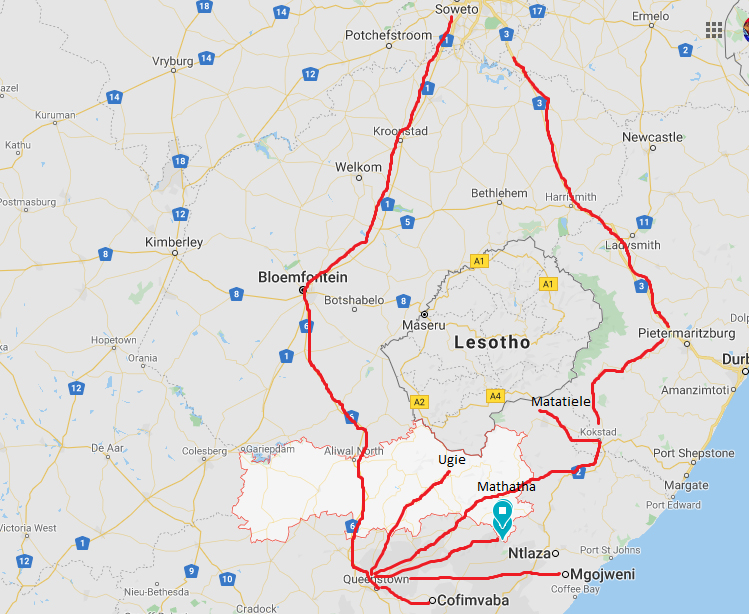Grain Research Programme field trip to the Eastern Cape 2020-07-28
Members of the Grain Research Programme at FABI have embarked on a journey of basic and applied research that will focus efforts to show a positive impact on the local grain industry. Maize is the most important grain crop in South Africa as it is both the major feed grain and the staple food for the majority of the South African population. Approximately 10-12 million tons of maize is produced in South Africa annually. The Eastern Cape Province, which currently only produces 1% of South Africa’s maize, will play an increasingly important role going forward. Several current projects aim to identify pests and diseases in the region in order to determine their impact on total production.
Three researchers from the FABI Grain Research Programme, Dr David Nsibo, Dr Godfrey Kgatle and PhD candidate Pfano Mbedzi, visited farms in the Eastern Cape from 12-17 July. The purpose of this field trip was to collect samples for several grain-related projects funded by Grain SA, the Maize Trust and the Royal Society’s FLAIR Fellowship. These included subsistence, smallholder, potential commercial and new era commercial farms. Samples and farming practice information were collected at 21 fields from seven localities (Ugie, Cofimvaba, Ntlaza, Mthatha, Mgojweni, Kokstad and Matatiele), producing maize, sorghum and millet. At some point the researchers felt like the coolest plant pathologists collecting frost frozen cobs and also had a real Smut experience collecting infected cobs.
Post-doctoral fellow Dr David Nsibo collected leaf litter showing visible foliar diseases. Diseases noted include gray leaf spot (Cercospora zeina), northern corn leaf blight (Exserohilum turcicum), common rust (Puccinia sorghi), polysora rust (Puccinia polysora), eye spot (Kabatiella zeae) and several other difficult to diagnose diseases due to the very dry litter. Implications of foliar diseases on a young developing plant is loss of photosynthetic leaf area which results in reduction in yield. Molecular identification and characterisation is yet to follow to determine the fungal diversity collected from leaf litter.
Pfano Mbedzi scouted for Busseola fusca (African maize stalk borer) and Spodoptera frugiperda (fall armyworm) larvae in maize stalks. Collections made will be crucial for her research project aiming to better understand the biology of these pests.
Postdoctoral Fellow Dr Mahlane Godfrey Kgatle collected stored grain, healthy and diseased maize cobs and soil from maize fields. Fungal infection of maize cobs not only reduces the quantity and quality of maize but also poses potential health risks when mycotoxigenic fungi establish itself on the crops. Even though fungal communities and specific species within the community play an important role, these are poorly characterised within the South African context. One aim of this study is to complete a large scale survey of species occurring on locally produced crops.
This trip was done in collaboration with Grain SA and some of their regional coordinators. We would like to thank Sinelizwe Fakade, Xhamakazi Sali, Sihle Cabane and Luke Collier for guiding us around the Eastern Cape.A special thank you to all the farmers for allowing us access and to collect samples from their properties.


